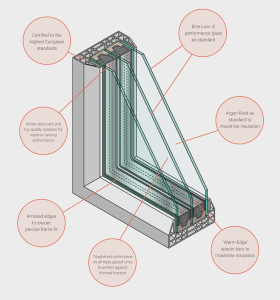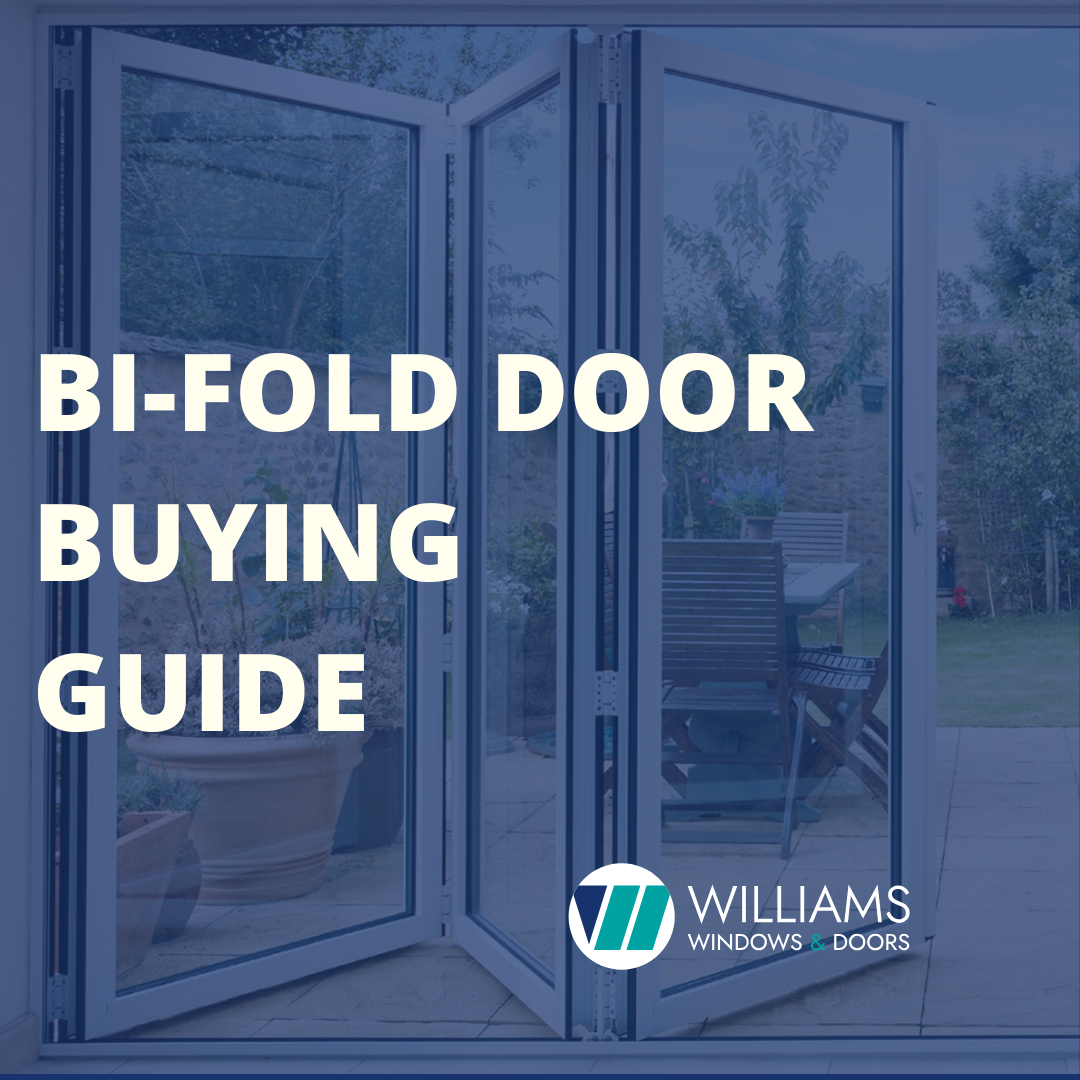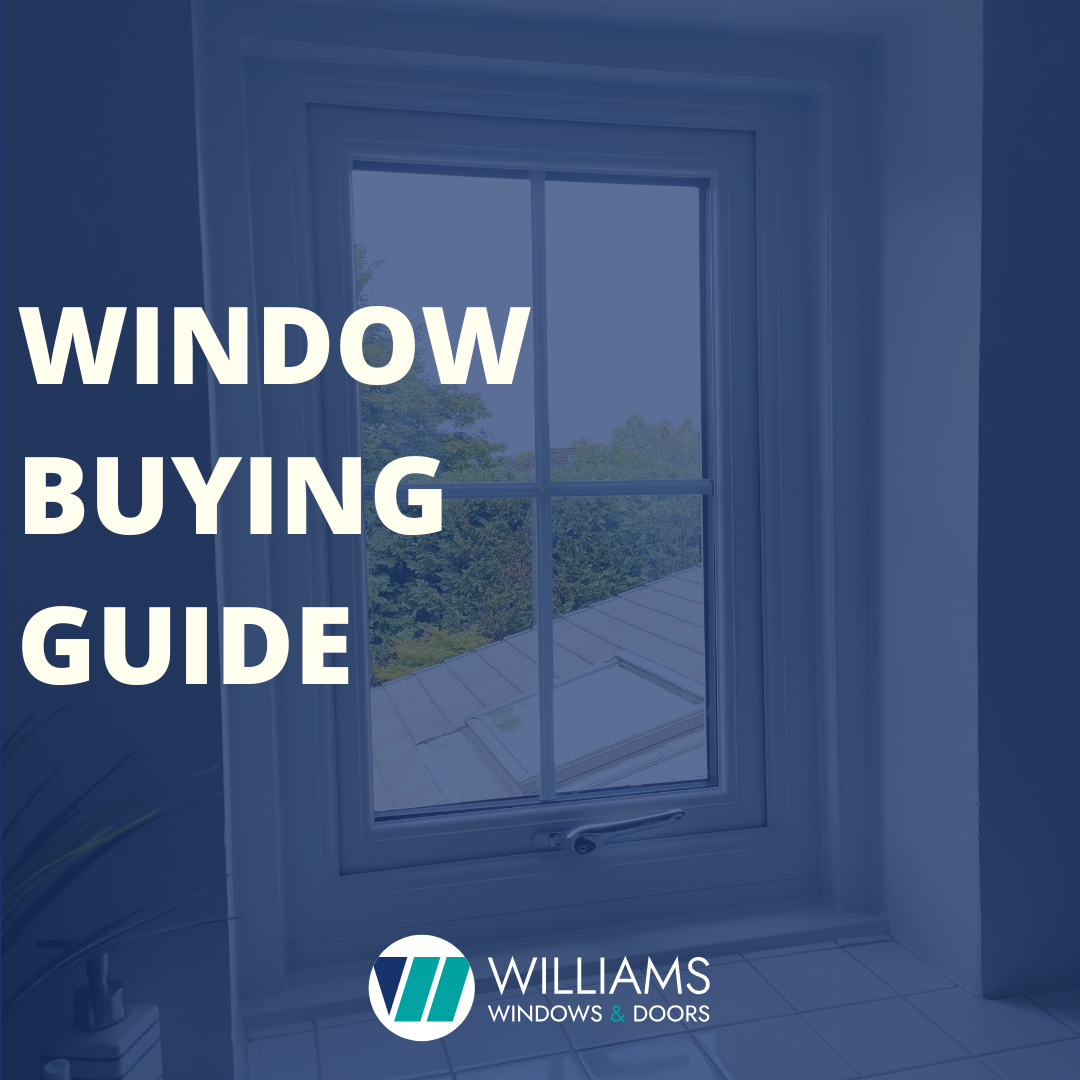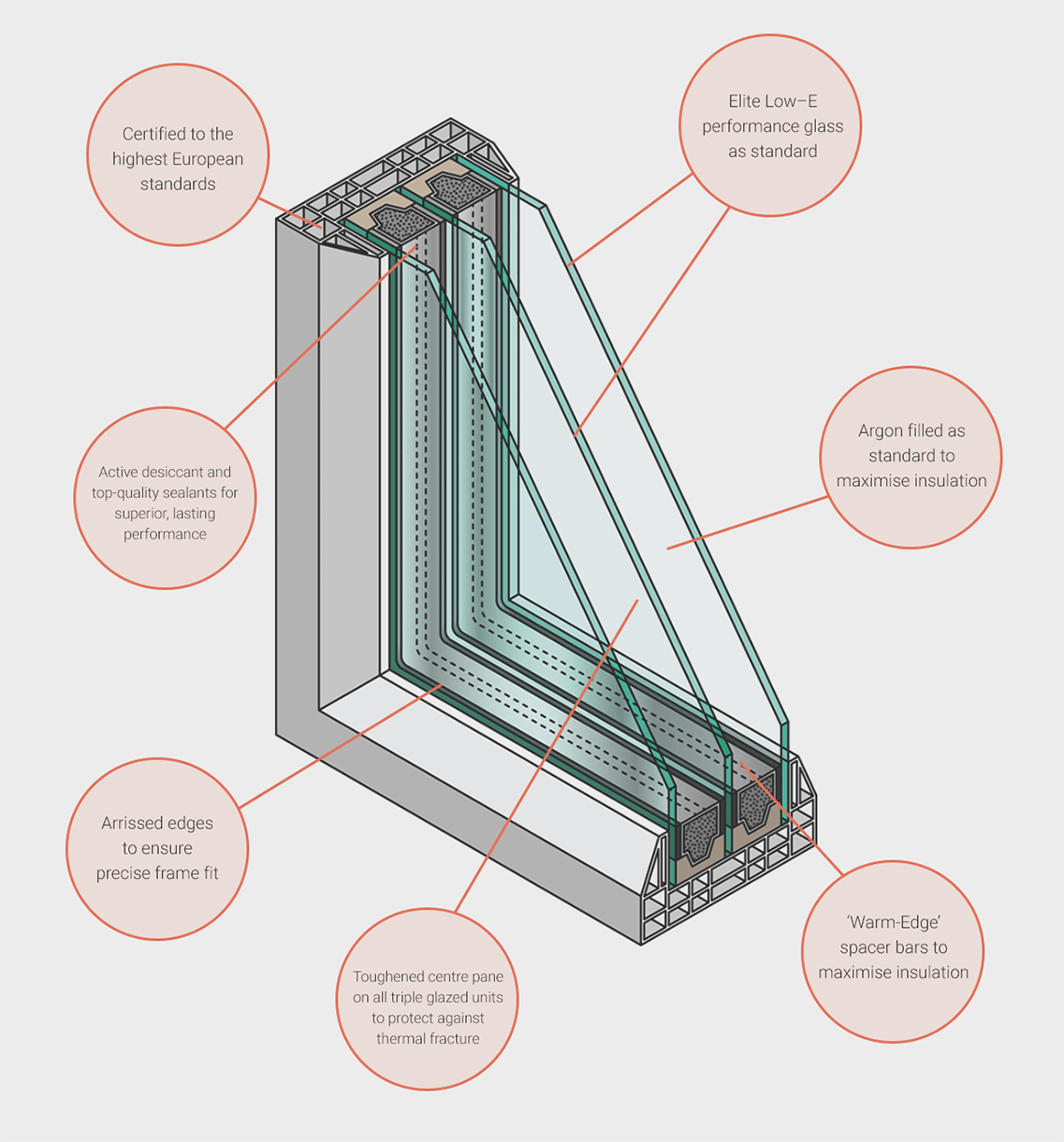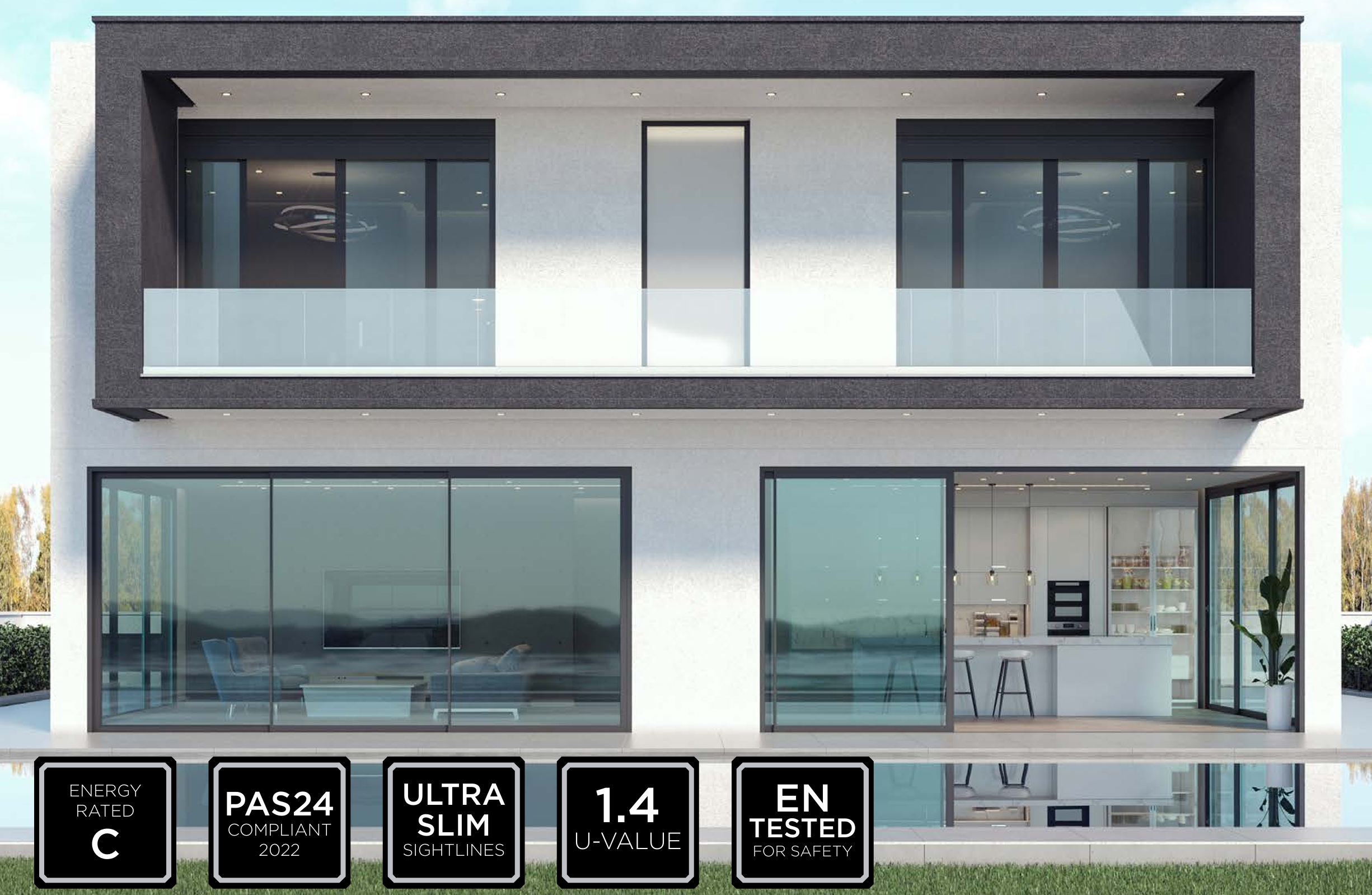How Window U-Values Have Improved: From Single Glazing to High-Performance IGUs
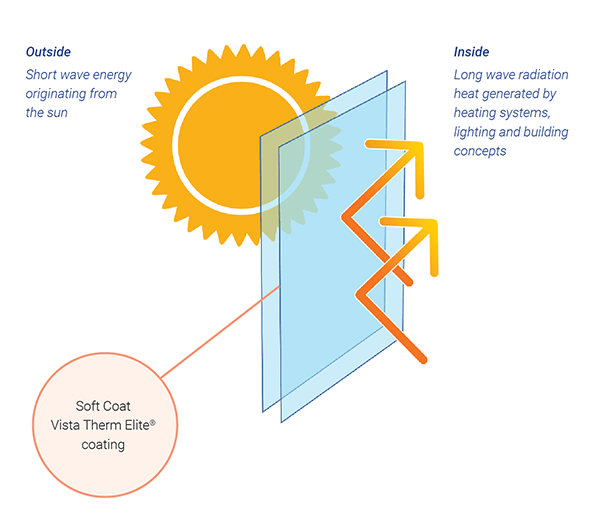
- 04 October 2025
- News
How Window U-Values Have Improved
Over the last 50–60 years window technology has moved from leaky single panes to high-performance insulating glass units (IGUs) that dramatically reduce heat loss. For Glasgow homeowners wanting warmer rooms and lower energy bills, understanding how U-values have improved — and why — helps when choosing upgrades or replacements.
What is U-Value (quick explainer)
U-value measures heat loss through a building component in watts per square metre per kelvin (W/m²K). The lower the U-value, the better the insulation.
A rapid timeline of improvement
-
1960s — Single glazing: Typical single-glazed windows had U-values around 4.8 W/m²K. The Open University
-
1980s — Early double glazing (air-filled): Double glazing first became common; typical units reduced U-values substantially (representative ~2.8 W/m²K depending on spacer and cavity). The Advanced Group+1
-
1990s — Gas fills and low-E coatings emerge: Introducing argon fills and early Low-E coatings cut U-values further (argon can improve insulating value by roughly 10–16% vs air). glassed.vitroglazings.com+1
-
2010s — Warm-edge spacers + soft-coat Low-E + argon: Combining these raised performance again; many modern double-glazed units achieved U-values around 1.2–1.4 W/m²K. Warm-edge spacers reduce edge heat loss compared with aluminium spacers. Edgetech+1
-
2020s — High-performance double and triple glazing: Today’s best IGUs (advanced soft-coat Low-E, optimized gas fills, warm-edge spacers, thermally-broken frames) commonly reach ≤1.0 W/m²K (triple glazing or specialist double units). These numbers enable compliance with tighter building regs and deliver measurable energy savings. regency-glass.s3.amazonaws.com+1
Period | U-Value Wm2K | Notes |
1960s (single glazing) | 4.8 | Typical single glazing value used historically (textbook reference). |
1980s (early double glazing, air-filled) | 2.8 | Early double glazing often air-filled; wide variation by build. |
1990s (double glazing + argon/early low‑E) | 1.8 | Argon fills and early low-E reduced U-values by ~10-20%. |
2010s (soft-coat Low-E + warm-edge + argon) | 1.2 | Combination of soft-coat Low-E, warm-edge spacers, argon; meets modern regs. |
2020s (high‑performance double / triple glazing) | 0.8 | High-performance IGUs (triple glazing or advanced double) can be <1 W/m²K. |
The rapid advancement in window technology translates directly into substantial savings for homeowners. For example, by upgrading from the early double glazing common in the 1980s (U-value of 2.8) to a high-performance modern unit with a U-value of 1.2, you are reducing the heat loss through that specific window area by approximately . This massive efficiency gain means that for every hour your heating system runs, over half of the heat that was once escaping through your windows is now retained inside your home, leading to significantly lower heating bills and a reduced carbon footprint
Why these changes matter (what made the gains possible)
-
Low-E coatings (soft-coat): Microscopically thin metallic/ceramic layers reflect interior radiant heat back indoors while allowing light through, reducing U-value and solar heat gain when needed. They are one of the single biggest step-changes in glazing performance. glassed.vitroglazings.com+1
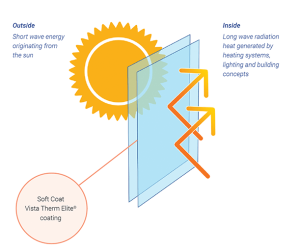
-
Gas fills (argon, krypton): Replacing the air cavity with argon (or krypton in narrow cavities) reduces convection and conduction. Argon commonly delivers ~10–16% improvement over air; krypton can give larger gains in tight cavities. glassed.vitroglazings.com+1
-
Warm-edge spacers (black thermoplastic/composite): Traditional aluminium (silver/gold) spacers are thermally conductive and create an edge cold-bridge. Warm-edge spacers use low-conductivity materials and can materially improve whole-unit U-values and reduce condensation risk — black warm-edge spacers also look cleaner with modern frames. Edgetech
-
Improved frames and installation: Thermal-broken aluminium, wider insulating profiles (uPVC, timber, composite frames), and better sealing/drainage have reduced frame U-value contribution and thermal bridging.
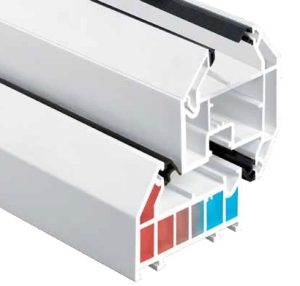 At Williams Windows & Doors we use Thermal uPVC Inserts in all of our frames, to ensure maximum insulation, weight optimisation and longevity.
At Williams Windows & Doors we use Thermal uPVC Inserts in all of our frames, to ensure maximum insulation, weight optimisation and longevity.
Lowering Your Energy Bills: Real-World Benefits of Modern Low-E Glazing
-
Lower heating bills and carbon footprint.
-
Reduced condensation and mould risk at window edges.
-
Improved comfort (warmer surfaces, fewer cold spots).
-
Compliance with current building regulations and improved property value
🏠 Frequently Asked Questions: Is It Worth Upgrading My IGUs?
Q: How do I know if my existing double glazing needs upgrading?
A: Signs include condensation between the panes, draughts, or rooms that still feel cold near the windows. Older double-glazed units (10–20+ years old) often have aluminium spacers, no Low-E coating, and air-filled cavities — all of which perform far below modern standards.
Q: What kind of improvement will I notice with new IGUs?
A: Upgrading to argon-filled, soft-coat Low-E glass with warm-edge spacers can cut heat loss by up to 50% compared with early double glazing. You’ll notice warmer rooms, less condensation, and reduced energy bills — especially during a Glasgow winter.
Q: Can I just replace the glass and keep my existing frames?
A: In many cases, yes. If your frames are still in good condition and structurally sound, replacing just the glass units is a cost-effective upgrade. A professional installer can check whether your existing frame profiles are suitable for new IGUs.
Q: How long do modern IGUs last?
A: High-quality, properly installed IGUs typically last 25–30 years or more. Advances in seal technology, gas retention, and spacer materials mean they stay efficient for far longer than older units.
Q: What’s the best glass option for long-term performance?
A: Choose soft-coat Low-E double glazing with argon gas and black warm-edge spacers as a minimum. For maximum insulation, triple glazing or solar-control coatings may be worthwhile depending on your property’s exposure and energy goals.
Call us today to speak with our expert team. Visit our showroom in Clydebank, or request a free no-obligation quote online.



